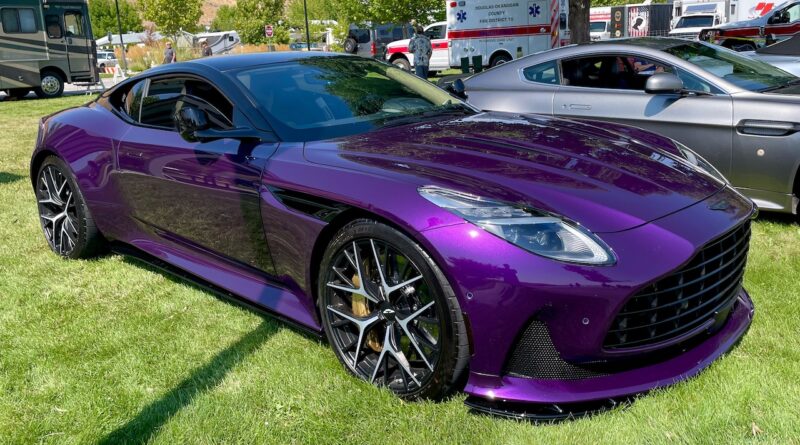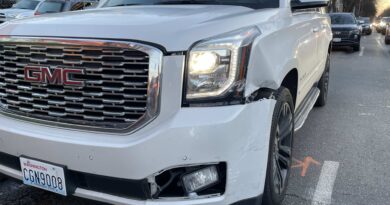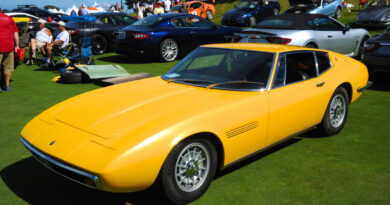Who Blew Up the Auto Industry?
Have you noticed the prices of new cars lately? Incredibly, the average price of a new car in the US is now almost $50,000. That’s a 60% increase in ten years, and 29% in the last four! When I was in high school an average new car was about $2,500. In those inflation rich 70’s, I remember reading by the early 80’s new cars would cost $10,000. I remember thinking ‘who’s going to be able to afford that!’
At the time, that $2,500 was a little more than a quarter of the annual average wage. Today, $50 grand is about two-thirds the median wage. Crazy! Sixteen million cars are sold in America each year, yet most people can’t afford a new one. All these statistics flying around and no one really has the answer to the simple conclusion these stats point to – if most people can’t afford new cars then who’s buying all these new cars? It only appears to add up if you combine most household’s two median incomes. Seems reasonable because that’s about the only way the auto industry can be selling all those cars.
Still, it’s nuts how much the price of cars have increased lately. I used to think GMC Yukons and Cadillac Escalades were stupid expensive, but now they top out at over $100,000! That’s nuts! Even the average used car with 70,000 miles on it is more than $25 grand. Who started this insanity?
I’m also curious at what appears to be significant price range compression. For instance, Porsches typically sell for over $100,000 now and can often exceed $250,000. This for a car company that sells 325,000 cars a year. While that’s certainly less than Ford or GM, those are still huge numbers next to boutique manufacturers like Bentley, Ferrari or Aston Martin. It wasn’t long ago that almost all Porsches were less than $100 grand.
Aston Martins were typically two to four times more than Porsches only ten years ago. Now, that multiple has compressed to something closer to 1.25 to 2 times more. I have a hard time believing Porsche cars really cost nearly as much to make as Aston Martins. Porsche makes 10 times as many sportscars and 50 times more vehicles overall in a year than Aston Martin. And, they have the added benefits of a larger parent company to boot. The economies of scale don’t add up.
Porsche is just one example. It leads me to think most of these car companies are making bigger profits on their cars than they have in the past, and it has nothing to do with increased expenses. Granted, many of them are investing heavily in EVs and Hybrids and battery technology, but those vehicles aren’t even close to self-sustaining. In essence, then, the logical conclusion is that sales of ICE cars are subsidizing the creation of those ‘other’ vehicles. And they’ve increased the price and profit margins of those ICE cars to do that.
Nice to know we’re getting it coming and going. The federal government also pitches in by passing BS bills like the 2021 Bipartisan Infrastructure Law to fund EV infrastructure (which they have yet to accomplish in any meaningful way), then uses more of our tax dollars to induce buyers to go electric with tax credits, and then the auto companies take more of our money with inflated margins to finance the creation of cars the government has mandated but that most people don’t want. Democracy at its worst and free market forces ignored.
Next we have fantastic green carbon laws, like the one in Washington State that adds a carbon tax to gasoline. On average, it has raised the price of gas about 50 cents a gallon since its adoption two years ago. In Washington State, government gets $1.20 in taxes for every gallon of gasoline sold. Can’t afford to buy a car and can’t afford to drive it once you get it. Anyone who thinks that doesn’t affect people in the lower income brackets the most is delusional. But you gotta’ hand it to ’em, those democrats really know how to create fear and get the most out of their supposed egalitarian propensities. In reality, it’s just another government money grab and a way to increase their insatiably greedy tax base. All of this works against the average joe being able to more readily afford buying and operating a car.
Keep in mind this may all be intentional. Seattle, and to a lesser extent the State of Washington, want to get people out of cars and into public transport. To do this, one of their ploys is to make getting around Seattle by car more and more difficult. They are not seeking to enhance individual mobility by finding solutions to move cars and trucks; pure and simple, they are executing a plan to eliminate the car.
I want to know where all this money that’s being plucked from the poor working stiff is going – other than the obvious government waste bin. That Bipartisan Infrastructure Law allocated $5 billion to EV infrastructure, yet in over 3 years since passage the federal government has only installed a grand total of 69 charging stations. A prime example why government is not the solution maker we would like it to be.
Getting back to the price of cars, what’s our solution? Is there a solution? There’s still a steel shortage. Supply chains, especially thanks to COVID shutdowns, are still strained and major union strikes are not helping. Inflation is still with us and increased government spending shows no signs of abating. The threat of tariffs remains. None of that is going to work in our favor.
I think the best we can hope for is a slowing of the increases, coupled with a bit more sanity in the stock markets and avoiding the bursting of any resulting investment bubbles. In other words, more rational thinking. We know how that usually goes. Someone needs to hit the pause button and slow things down to more reasonable expectations. There’s far too much panicky ‘things have to get done now!’ thinking.
Take a chill pill everyone. Wait for this crazy election cycle to sort itself out and then let’s move on with some semblance of sanity. I hope that’s not wishful thinking.





Totally on point with the cost of cars… all cars…American, Japanese, German, and was going to add Volvo but they are no more.
As you pointed out a *new* car is now close to $50k… or more if you climb the dollar ladder to a car you’d actually want to drive/own.
However, you’ll be thrilled to learn I have an answer… I’m frankly surprised you did not come up with this on your own…. DO NOT buy a new car. What ALL of you car buyers should be doing is buying a “pre-owned” Aston Martin. If you start at the aforementioned $50k… and go down from there you can likely buy a 15-20 year old Aston. The real question is…. would you like to drive a “used” Chevy that three years down the road is both used up and worthless? Common sense, even for the terminally stupid should be able to get that one right.
Now… changing gears…and again supporting your observation about cars…. I do have a “Yeah but”… Airline Travel. It used to be that even the cheap seats were quite pricy, now anyone with a little dough can fly commercially. As someone that used to fly a lot… I can remember Pan Am Stewardess’s coming down the aisle with a cart… roast baron of beef…would you like some vegetables with that?
Now, it is take your (tiny) seat, and we will throw you a bag of peanuts… maybe….
It is scarily like what the Greyhound bus use to be like…I’m wondering what that is like NOW?
Thomas, Yes, you are right on all counts. I thought about the used car route as well, I just didn’t say so. Used cars these days average $25k for one with 70,000 miles on it. No bargain there. But, you are right again on buying an Aston. Very reasonable prices for used Astons that are reliable and well-made. Why more people don’t realize this is their loss and our gain, I guess.
I can happily comment on the current state of airline transport, but I will save that for another day. I was in the airline/airplane supply chain, particularly cabin systems and interiors, for 45 years. As a result, I did a fair amount of flying myself to and from all of our airline customers.